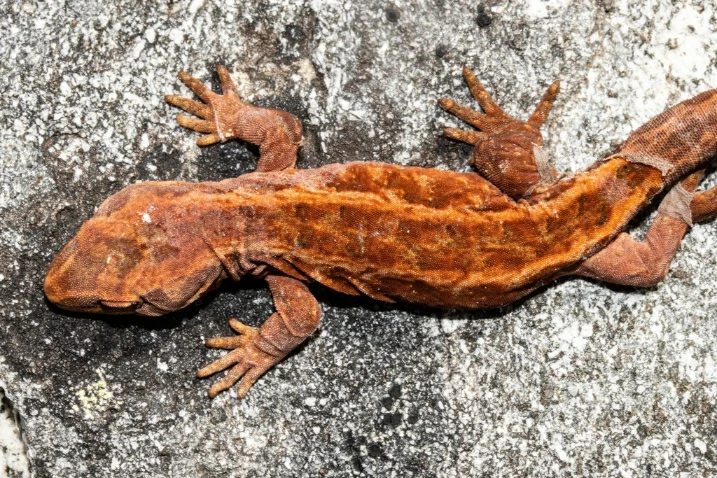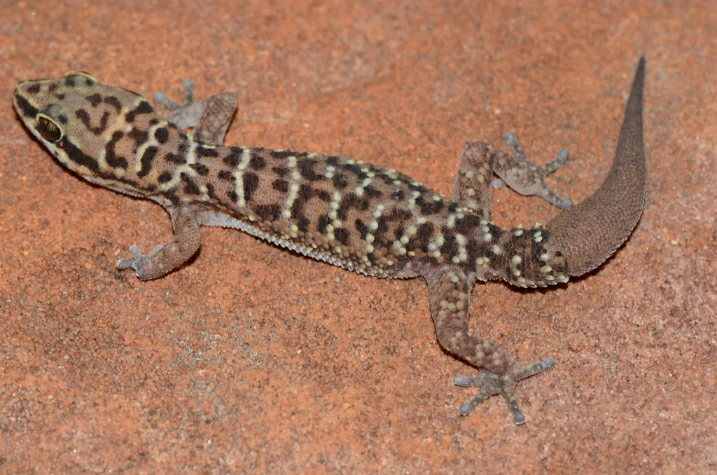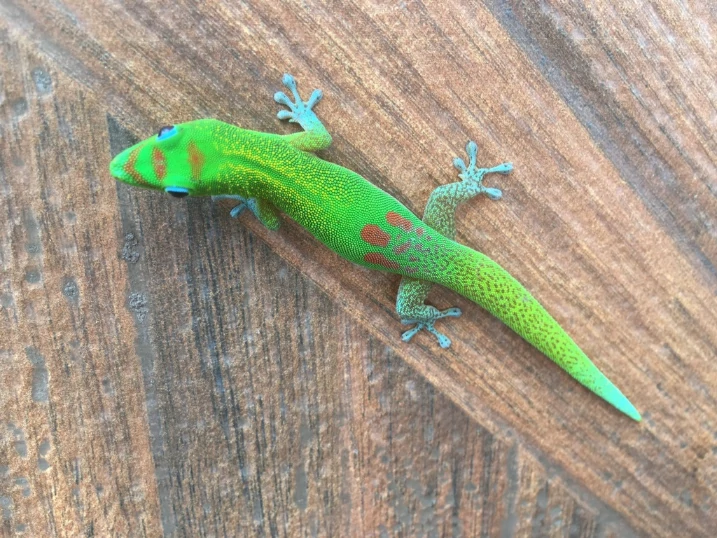If you’ve ever seen a lizard dash across your yard or suddenly vanish behind a bush, you might notice something weird: its tail sometimes just wiggles behind it.
Sometimes, it even falls off completely. It’s a surprising sight, and you might think, “Ouch, that must hurt!” After all, losing a limb or tail would probably be really painful for most animals. But do lizards feel pain when they lose their tails?
No, Lizards probably don’t feel much pain when their tails drop. Their bodies are built so tails can come off at special weak spots in the tail bones. These spots let the tail break off without sending strong pain signals to the lizard’s brain. That way, the lizard can run away from predators without freezing or getting stopped by shock.
Even though dropping a tail isn’t very painful, it still has real costs. The lizard loses some stored energy, may have trouble balancing for a while, and is more vulnerable until the tail grows back.
In a way, a lizard’s tail is both a shield and a battery pack. Dropping it is a trade-off between surviving right now and having energy for later.
How Lizards Are Built to Drop Their Tails Without Much Pain
The trick is in how the tail is built. A lizard’s tail has bones with special weak spots, called fracture planes, where it can snap cleanly.
These aren’t fragile, they’re made to break only when needed and let the lizard feel very little pain.

Muscles in the tail automatically contract as it comes off, helping it separate without tearing too much tissue. The nerves in these spots are less sensitive than in the rest of the tail.
Basically, the tail is “pre-cut” and ready for escape, so the lizard can run immediately without being slowed down.
Even if it isn’t completely pain-free, this system is designed so the lizard can get away from danger fast.
Otherwise, it might freeze or panic, which is exactly what predators want.
Why Losing a Tail Is Still Stressful for Lizards
Even though the tail drop doesn’t cause sharp pain, it’s stressful. The tail isn’t just for show, it stores fat in a lot of species, like leopard geckos and skinks.
Losing it means losing energy, which can make the lizard weaker or slower for a while.
The tail also helps with balance. Lizards that live in trees use their tails like a tightrope walker uses a pole. Lizards that run on the ground use it to balance when climbing or sprinting.
Losing a tail, even temporarily, can make moving around harder and a bit risky.
So dropping a tail isn’t about pain as much as it’s about a tough trade-off: getting away from danger now versus being strong and balanced later.
Do Lizards Show Any Signs of Pain After Dropping Their Tails?
If you watch a lizard right after its tail falls off, you’ll notice it usually moves quickly and stays alert rather than showing obvious pain.
The tail itself often keeps wiggling for a few minutes, which distracts predators while the lizard gets away.

Lizards don’t scream or make noises like mammals do when hurt. That doesn’t mean they don’t notice the loss, it’s more like their bodies are wired to focus on getting away first.
Any pain is ignored or minimized at that moment.
How Losing a Tail Affects a Lizard Beyond Pain
Dropping a tail helps a lizard survive, but it comes with costs. The tail stores fat and nutrients, so losing it temporarily reduces energy.
That can slow growth, make the lizard less active, or even affect its immune system until the tail grows back.
Some lizards, like leopard geckos, rely heavily on tail fat, so they may seem sluggish for a while.

Others, like anoles, don’t depend on tail fat as much, so they can afford to lose tails more often.
Tail loss can also change how a lizard moves. Many lizards use their tails for climbing, running, or swimming.
After dropping a tail, they may move more carefully until they get used to the new body.
How Lizards Regrow Their Tails Without Causing Pain
After a tail falls off, a lizard can grow it back over a few weeks or months, depending on the species.
The new tail is mostly cartilage instead of bone, but it still helps with balance, movement, and even storing some fat.
Regrowing a tail doesn’t seem to hurt the lizard much. It takes energy and nutrients, and the body carefully grows new tissue. It’s more of a physical challenge than a painful injury.
Because of this, lizards may eat more or move a little slower until the tail is fully grown.
Some species can grow tails multiple times, though each new tail might look or work slightly differently. Even so, these tails still help, and the process doesn’t cause major pain.
Are There Differences Between Species in Tail Pain?
Not all lizards drop tails the same way. Some, like green anoles and brown anoles, drop them easily and often. Others, like iguanas or monitors, do it less.

Lizards that rely on tail-dropping have special fracture spots, less sensitive nerves, and tails that come off with very little stress.
Lizards that rarely lose tails may feel a bit more stress, though it’s still way less than a human might expect.
Can Tail Loss Cause Long-Term Stress or Discomfort?
Tail loss is stressful, but it rarely causes long-term suffering in wild lizards. The main challenges are losing energy and moving differently for a while.
Some may be more careful around predators, but once the tail starts growing back, they usually go back to normal.
In captivity, losing a tail can be tougher if the lizard is already dealing with things like wrong temperature, poor food, or a bad enclosure.
With proper care, lizards recover quickly, and stress is minimal.
Can Lizards Suffer Complications After Losing a Tail?
Even though losing a tail is mostly pain-free, there are risks. The wound can get infected if the area isn’t clean. Pet lizards need clean cages to avoid infections.
Losing tails multiple times can reduce fat reserves, slow movement, and make a lizard temporarily more vulnerable.
It’s not painful like humans feel it, but it still affects health.
What Humans Should Know About Handling Lizards
If you have lizards as pets, handle them gently to avoid stressing them into dropping tails.
Rough grabbing or twisting a tail can trigger tail loss, which is stressful and drains energy.
Support the lizard’s body and the base of the tail, and move slowly. If a tail drops, give the lizard a calm place and plenty of food and water to help it grow a new tail.
Conclusion
So, do lizards feel pain when they drop their tails? Not like humans do. Tail-dropping is a survival trick that keeps pain low while letting the lizard escape.
They still lose energy, may have trouble balancing, and are more careful for a while, but the tail coming off itself is mostly painless.
Next time you see a lizard sprint across your yard with its tail twitching behind it, you can see how it’s built to survive without unnecessary suffering.
The tail isn’t just a limb, it’s a clever tool made to come off quickly, distract predators, and give the lizard another day to live.
Frequently Asked Questions
Does it hurt when lizards lose their tails?
No, it doesn’t hurt them as much as you’d think. Lizards are built to drop their tails as a defense mechanism, and their bodies have special muscles and nerves that help limit pain.
When a lizard’s tail comes off, it wiggles and distracts predators while the lizard escapes, but the lizard usually keeps running, eating, and moving around almost like nothing happened.
It’s kind of like their body is designed to take a hit without stopping them, which is pretty amazing.
Hi, my name is Ezra Mushala, i have been interested animals all my life. I am the main author and editor here at snakeinformer.com.

